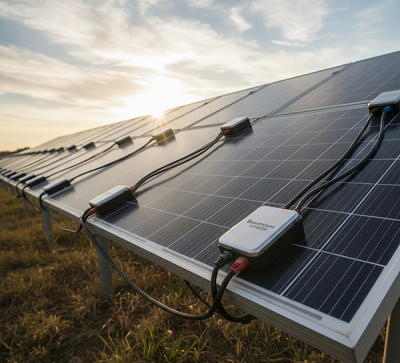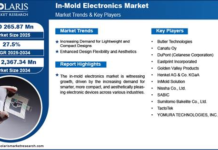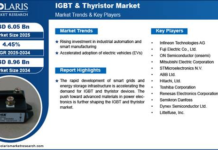Solar MLPE Market:
Market Summary: According to latest research by Research Intelo, the Global Solar Module Level Power Electronics (MLPE) market size was valued at $3.1 billion in 2024 and is projected to reach $10.7 billion by 2033, expanding at a robust CAGR of 14.8% during the forecast period of 2025–2033. The primary catalyst for this impressive growth trajectory is the widespread adoption of distributed solar generation, coupled with the increasing demand for enhanced safety, monitoring, and energy yield optimization at the module level. As the solar industry pivots toward greater efficiency and intelligent energy management, MLPE technologies such as microinverters and DC optimizers have become essential for both residential and commercial installations, driving market expansion across all major geographies.
The Solar Module Level Power Electronics (MLPE) market is gaining remarkable traction as solar installations continue to scale globally. This surge reflects the accelerating adoption of smart energy solutions, advanced monitoring systems, and optimized solar power generation at the module level.
Understanding MLPE Technology
Module Level Power Electronics (MLPE) refers to devices such as microinverters and DC power optimizers installed at individual solar modules. These devices enhance system performance by mitigating power losses caused by shading, dirt, or module mismatch. Unlike conventional string inverters, MLPE solutions offer greater flexibility, safety, and real-time monitoring, enabling efficient energy yield across residential, commercial, and industrial applications.
Market Drivers
1. Growing Demand for Energy Efficiency
Rising electricity costs and the global shift toward renewable energy are driving demand for solar systems that deliver higher efficiency and reliability. MLPEs play a vital role in maximizing energy output by regulating power flow at the individual panel level.
2. Increasing Adoption of Residential Solar Systems
Residential installations are a major contributor to MLPE demand. Homeowners prefer microinverters and power optimizers for their ability to ensure optimal energy harvest, even in partially shaded rooftops. Moreover, simplified installation and low maintenance requirements make MLPE solutions ideal for small-scale solar setups.
3. Government Incentives and Safety Standards
Government-backed incentives and stringent safety regulations, particularly rapid shutdown requirements in regions like North America and Europe, are fueling MLPE integration. These safety mandates encourage the use of module-level technology that can quickly isolate DC voltages during emergencies, protecting both property and personnel.
Challenges Facing the Market
Despite strong growth prospects, the MLPE market faces certain challenges. High initial costs compared to traditional inverter systems may limit adoption, especially in developing markets. Additionally, complex system integration and compatibility issues between modules and electronics can increase installation complexity. However, ongoing advancements in plug-and-play designs and standardized communication protocols are expected to alleviate these concerns.
Emerging Opportunities
1. Smart Monitoring and IoT Integration
The integration of Internet of Things (IoT) and cloud-based monitoring platforms offers real-time performance tracking and predictive maintenance. This trend is creating lucrative opportunities for manufacturers to develop AI-powered MLPE solutions that enhance system reliability and diagnostics.
2. Expansion in Utility-Scale Projects
While MLPEs have traditionally been favored for residential systems, their adoption in utility-scale solar farms is increasing. New cost-effective and high-efficiency module-level devices are enabling developers to optimize large-scale projects with minimal performance losses.
Technological Advancements
The Solar MLPE market is witnessing rapid innovation driven by advancements in semiconductor design, power conversion efficiency, and digital communication. Modern MLPE systems now feature integrated monitoring, AI-based fault detection, and wireless communication, enabling seamless data exchange and predictive maintenance. Manufacturers are also developing next-generation microinverters with higher power density, better heat management, and enhanced grid compatibility.
Competitive Landscape
- SolarEdge Technologies
- Enphase Energy
- Tigo Energy
- Huawei Technologies
- SMA Solar Technology
- ABB
- APsystems (Altenergy Power System)
- Darfon Electronics
- Fronius International
- Chilicon Power
Future Outlook
The future of the Solar MLPE market appears highly promising, driven by increasing global investments in clean energy and digitalized solar infrastructure. As the cost of solar modules continues to fall, demand for high-performance, smart power electronics is set to rise. The growing emphasis on distributed generation, energy storage integration, and grid modernization will further propel MLPE adoption across residential, commercial, and utility sectors. With supportive policies, sustainability goals, and continuous innovation, the MLPE industry is expected to become a cornerstone of the next-generation solar landscape—delivering safer, smarter, and more efficient energy solutions worldwide.
Source: https://researchintelo.com/report/solar-module-level-power-electronics-market


















